

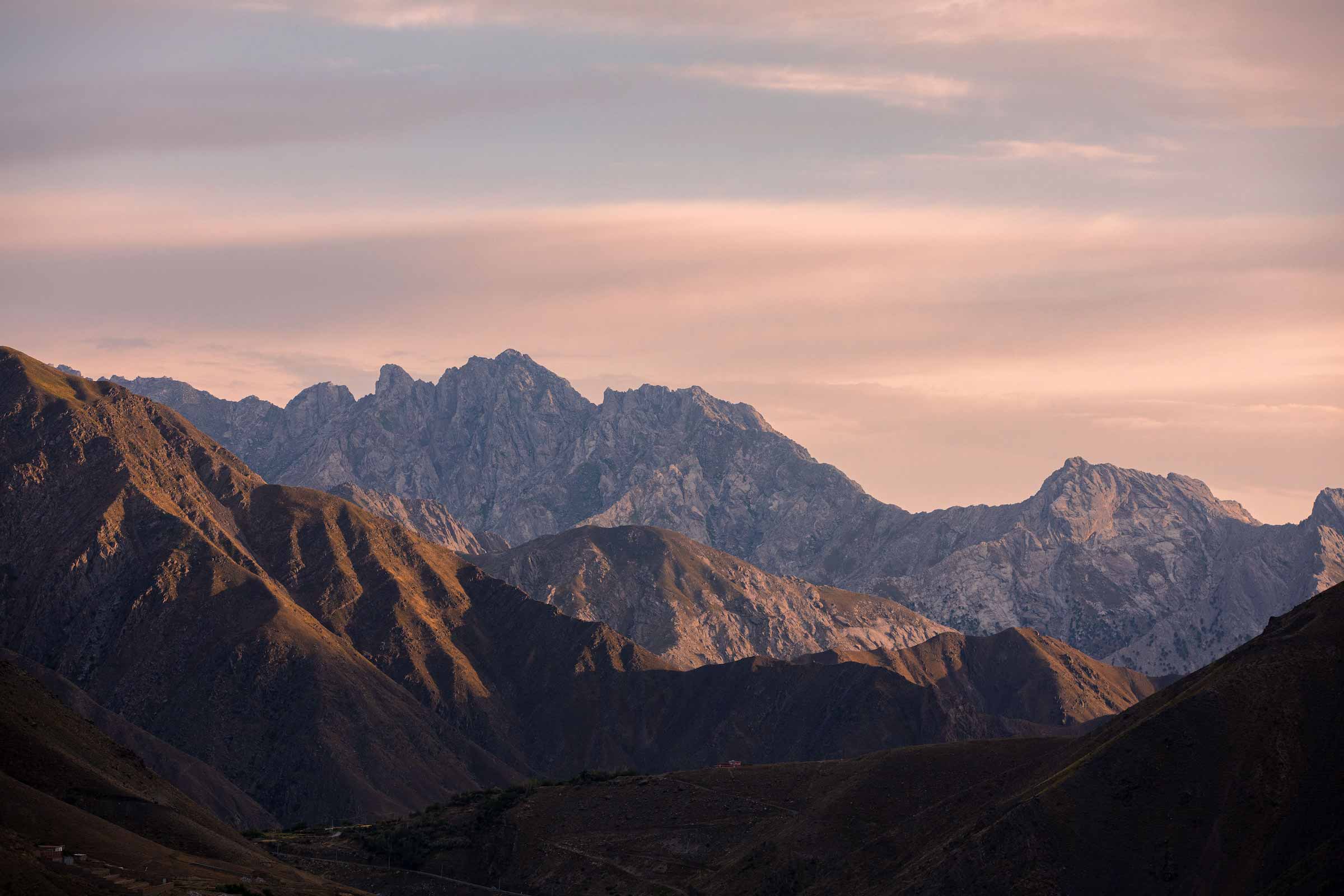
I will begin the article by answering 4 frequently asked questions about Afghanistan.
The map of Afghanistan shows a landlocked country in the heart of Asia. The country is divided into 34 provinces, which are further subdivided into districts. Kabul is the capital city of Afghanistan and is located in the east-central part of the country.
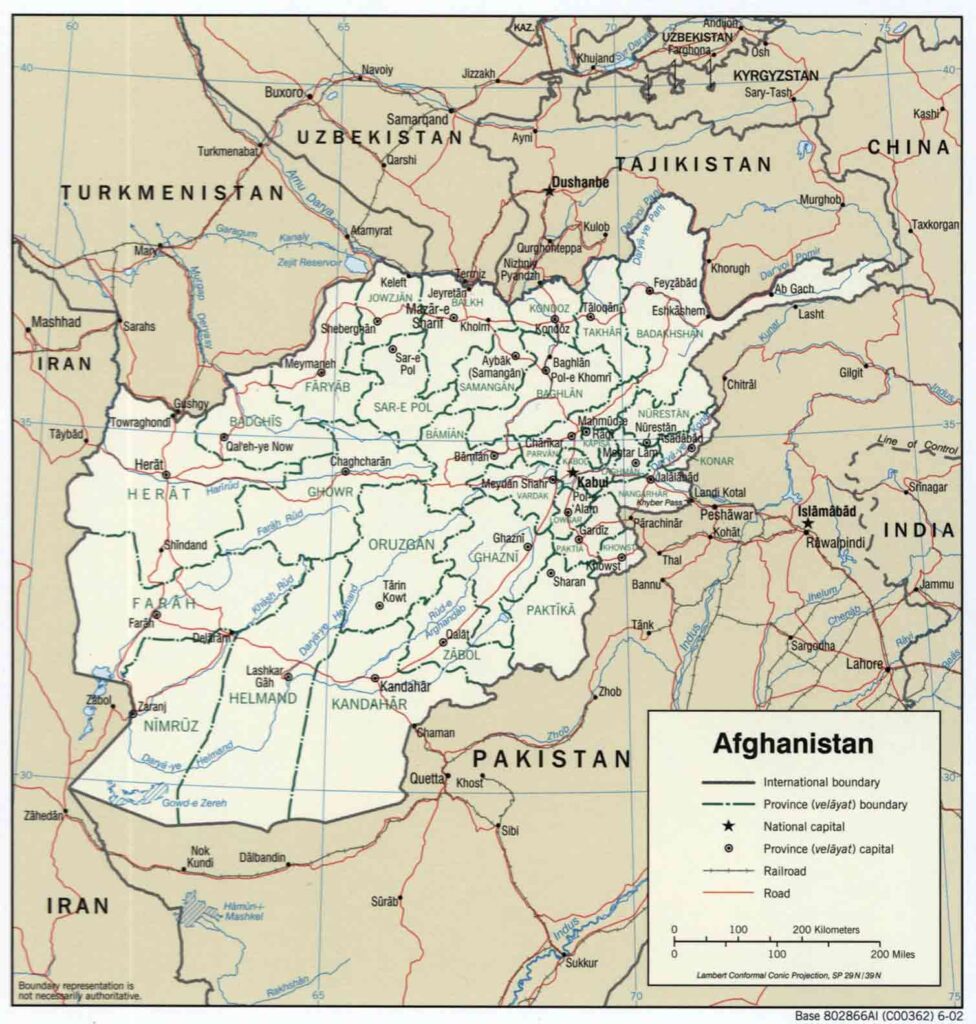
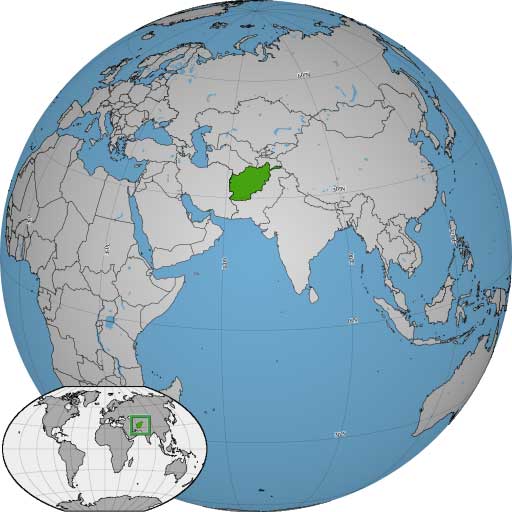
We will discuss Afghanistan’s map more in the facts section.
The flag of Afghanistan consists of three equal vertical stripes of black, red, and green. In the center of the red stripe is the national emblem of Afghanistan, which features a mosque with a pulpit and flags on either side, below there is the Eastern Arabic numerals for the solar year 1298 (1919 in the Gregorian calendar, the year of Afghan independence from the UK).
The black stripe represents the dark past of Afghanistan, the red stripe represents blood shed for independence, and the green stripe represents hope for a bright future. The emblem in the center represents Afghanistan’s Islamic faith and its commitment to rebuilding the country.
Currently, with the Taliban’s control over Afghanistan, the flag that is currently in use is not the flag I previously mentioned but rather the Taliban’s flag. Although the Taliban’s flag is currently in use, I decided to include Afghanistan’s previous flag as that is still technically the official flag.
We will discuss Afghanistan’s flag more in the facts section.
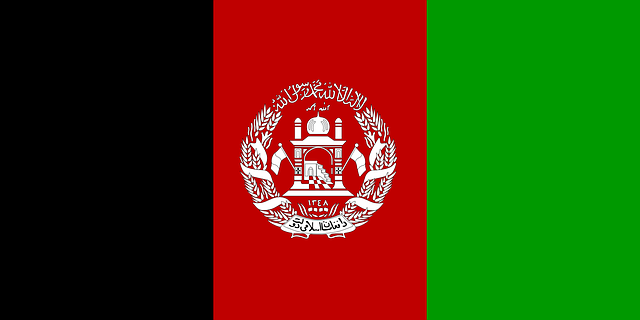
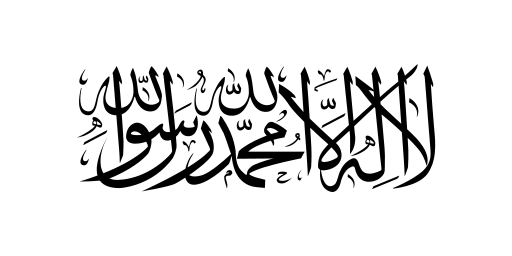
The currency of Afghanistan is the Afghan Afghani, which is recognised by the symbol “؋” or “Af”.
The Afghani is divided into 100 smaller units called pul, but due to inflation, pul coins are not commonly used anymore. Banknotes are issued in denominations of 10, 20, 50, 100, 500, and 1,000 Afghanis.
The Afghan Afghani is managed and regulated by Da Afghanistan Bank, which is the central bank of Afghanistan.
The country has a diverse cultural and linguistic heritage, with Pashto and Dari being the official languages. However, many other languages are spoken throughout Afghanistan, including Turkmen, Balochi, and Pashayi, among other smaller languages and local dialects.
With the frequently asked questions out of the way I will now move onto 11 interesting facts about Afghanistan.
Afghanistan is a landlocked country in South Asia that shares borders with six other countries. These countries are Pakistan to the east and south, Iran to the west, Turkmenistan, Uzbekistan, Tajikistan to the north, and China to the northeast. The country is situated at the crossroads of Central Asia, South Asia, and the Middle East, and has been influenced by many different cultures throughout its long history.
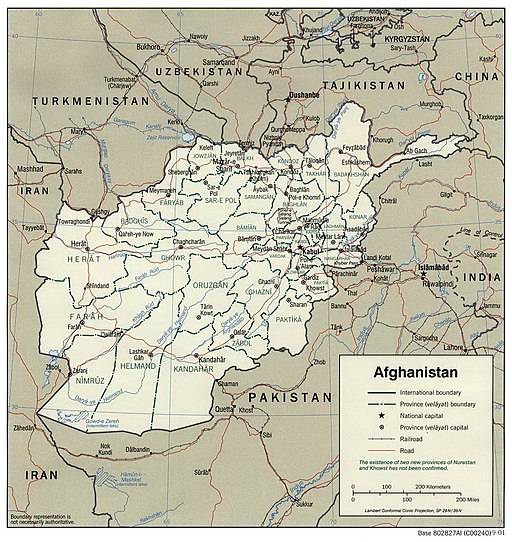
Afghanistan is home to more than 42 million people, making it the 36th most populous country in the world. Most of the population is ethnically Pashtun, followed by Tajik, Hazara, and Uzbek, among many other smaller groups that call Afghanistan their home.
Despite its population size, Afghanistan is a landlocked country with a rugged terrain, including mountains, valleys, and deserts. Of the total population around 71% live in rural areas spread across the whole country, and another 5% live in nomadic communities and move around the country. The remaining 24% live in the cities like Kabul which is the capital city, and Herat which is one of the oldest and most important cities in the region.
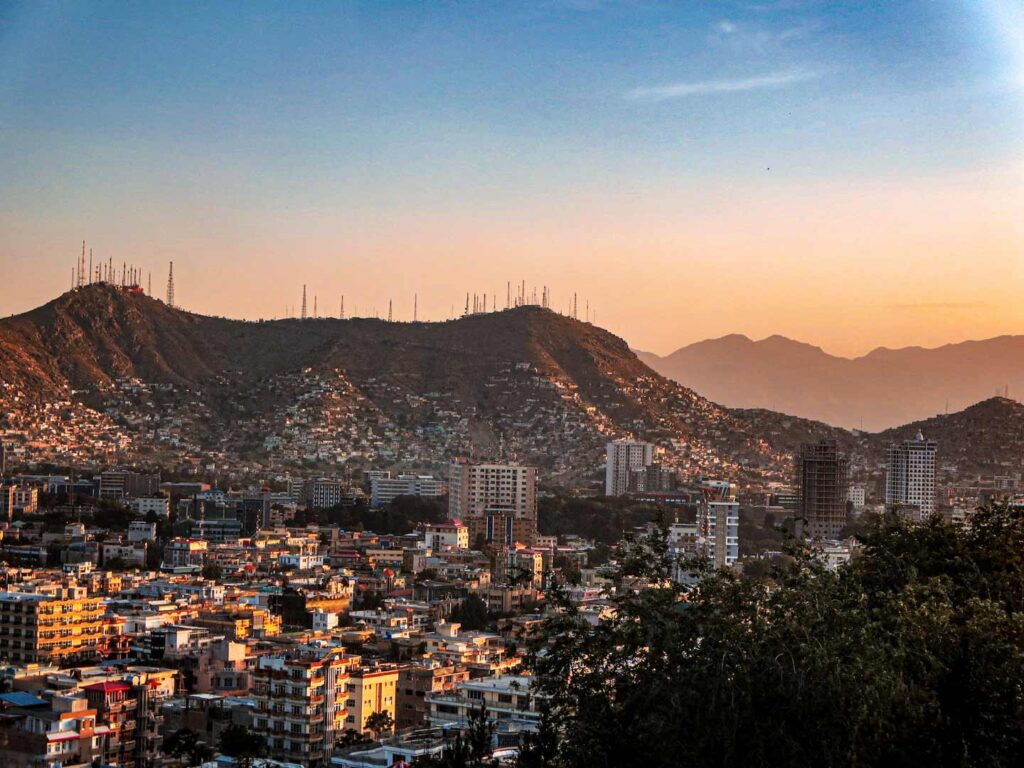
Afghanistan is the 41st largest country in the world, with a total area of approximately 652 861 square kilometres (252 071 square miles). It is roughly the size of the US state of Texas or France, and as previously mentioned it is bordered by 6 other countries, Pakistan to the east and south, Iran to the west, Turkmenistan, Uzbekistan, and Tajikistan to the north, and China to the northeast. Despite its relatively small size compared to some of its neighbours, it has still made a massive impact on the surrounding regions and is considered a significant landmass geopolitically.
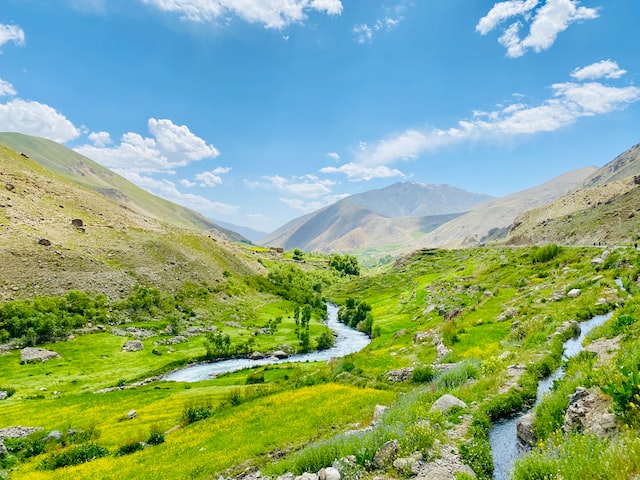
The oldest oil paintings in the world are a series of murals located in the caves of Bamyan in central Afghanistan. These murals are believed to date back to the 7th century, making them over a thousand years old.
The murals depict scenes from the life of Buddha and were believed to be created using walnut and poppy-seed oils, this technique involves mixing pigments with different oils to make a slow drying paint. While this technique was used in ancient times, it was not until the 12th century that oil painting emerged as a popular method of painting in Europe where the most famous oil paintings are from.
The discovery of these ancient oil paintings in Afghanistan is significant because it challenges the conventional belief that oil painting originated in Europe during the Renaissance. It also provides insight into the silk road, the artistic traditions of the region, and the techniques that were used to create artwork in ancient times.
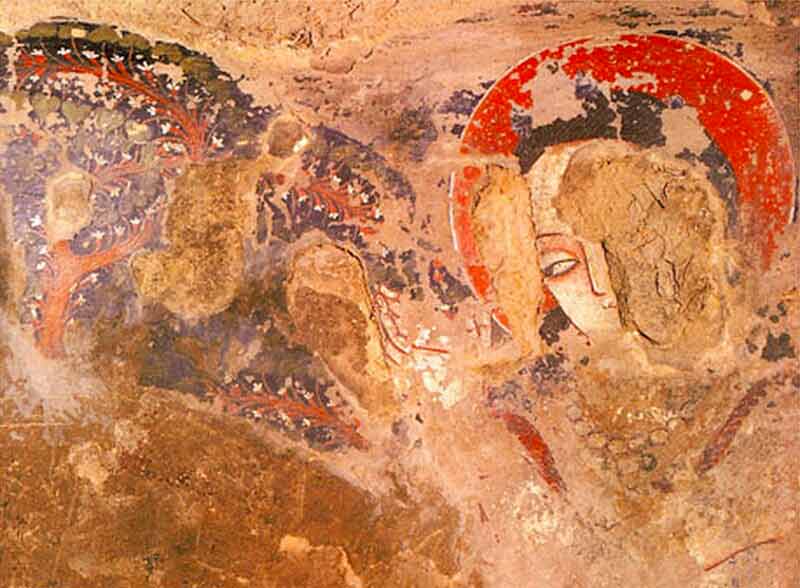
The country is situated in a region that is subject to a range of climatic influences, including those from the Himalayas, the Hindu Kush, and the deserts of Central Asia. With this In mind, it is not surprising that one of the most significant features of Afghanistan’s climate is its extreme temperature fluctuations.
The hottest temperature ever recorded in Afghanistan was an astounding 49.9 °C (121.8 °F), this temperature was recorded back in august 2009 and the coldest temperature ever recorded was -23.4 °C (-10.12 °F) in January 2008. Although these are on the extreme end it shows the potential of the weather in Afghanistan. On the more average side, Afghanistan has an average temperature of 25 to 35 °C (77 to 95°F) in the summer months, and in the winter months it averages between -10 to 10 °C (14 to 50 °F).
In addition to its temperature fluctuations, Afghanistan is also prone to erratic weather patterns, including droughts, floods, and occasional earthquakes.
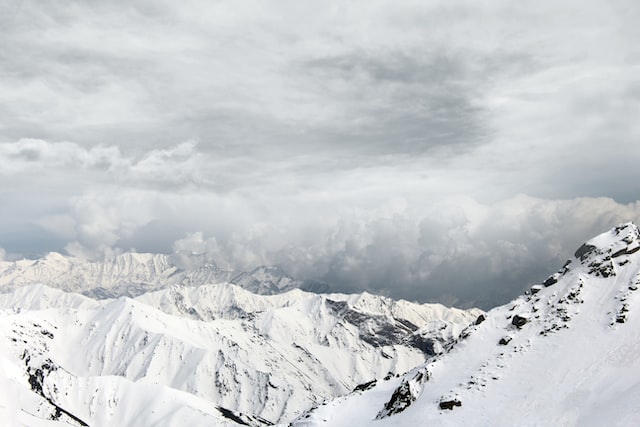
Afghanistan’s history is long and complex, and over the course of centuries, the country has been ruled by various empires, kingdoms, and other political entities. Each of these different rulers and regimes has used different flags to represent themselves and their authority.
The first recorded use of a flag in Afghanistan dates back to the early 18th century, when the Hotak dynasty established a new kingdom in the region. The Hotak flag was a simple black banner with a gold border and a white crescent moon in the center.
Over the centuries that followed, many different flags were used by various Afghan rulers and governments. Some were simple and plain, while others featured complex designs and symbols. Some flags were used for only brief periods of time, while others endured for decades or even centuries.
In total, Afghanistan has had 26 different flags throughout its history. These flags represent the country’s rich and diverse cultural heritage, as well as the many changes and challenges it has faced over the centuries.
Afghanistan is well-known for producing high-quality carpets that are renowned around the world for their beauty, durability, and intricate designs. The art of carpet weaving has a long and rich history in Afghanistan, that dates back many centuries.
Afghan carpets are typically handwoven by skilled artisans, using traditional techniques that have been passed down through generations. These carpets are made from high-quality wool, which is sourced from local sheep and then carefully washed, dyed, and spun into thread.
Today, Afghan carpets are exported to markets around the world, including Europe, the United States, and Asia. They are highly valued by collectors and enthusiasts alike and are considered to be some of the finest carpets in the world.
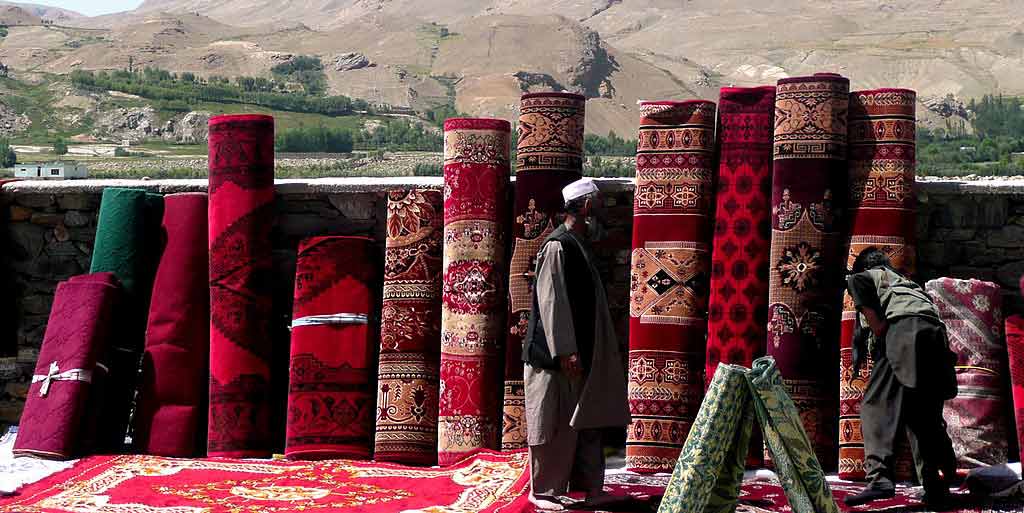
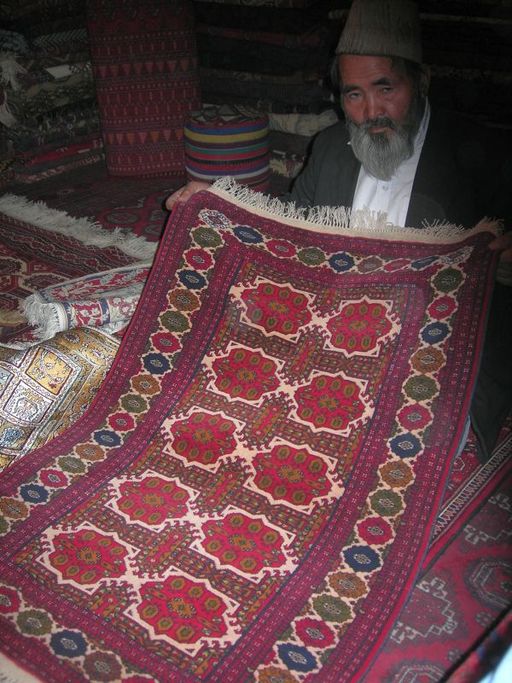
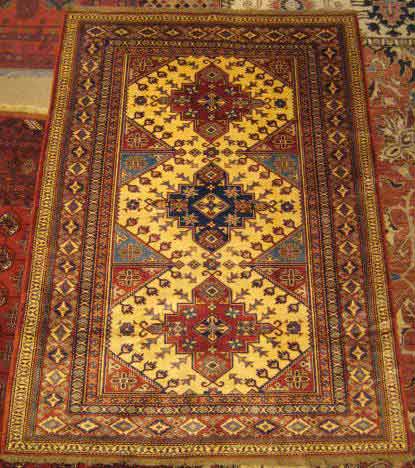
Buzkashi is a traditional and popular sport in Afghanistan that is often referred to as the national sport. It is a game that combines elements of polo and rugby but, unfortunately for the goat it is played with a freshly slaughtered goat instead of a ball.
The game is played on horseback, with two teams of riders competing against each other. The aim of the game is to grab the carcass of a goat, which is placed in the center of the field, and carry it to a scoring area on the opposing team’s side. The goat carcass, or “buz,” weighs between 22 and 45 kilograms (50 and 100 pounds) and often has no head, legs, or tail.
Buzkashi has been played for centuries all throughout Asia, and its popularity shows no signs of waning.
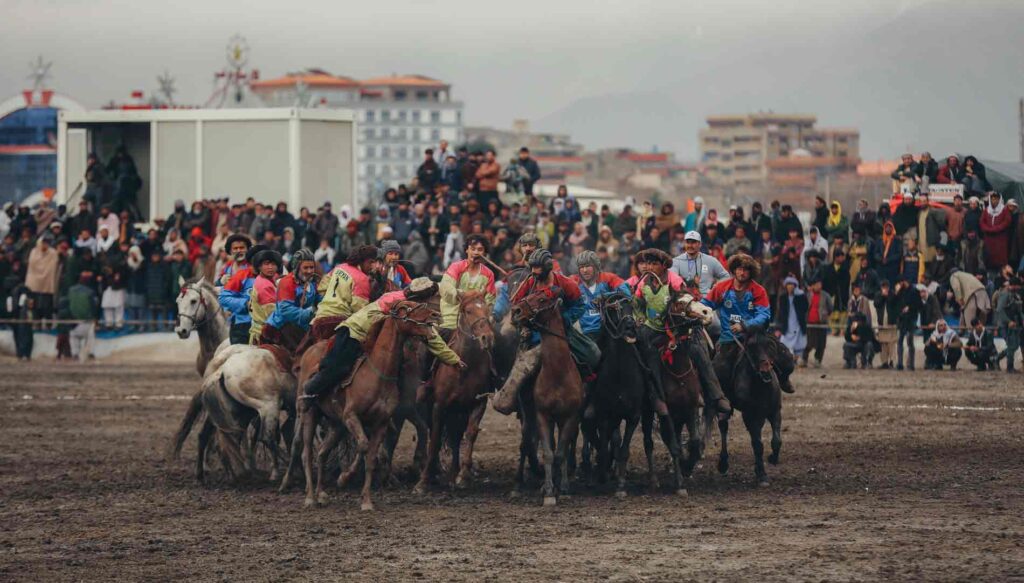
The Afghan Hound is a breed of dog that originated in Afghanistan, where it was developed to hunt large game such as deer, gazelle, and leopards in the rugged terrain of the country. The breed is known for its beautiful appearance, with long, silky hair that can be found in a variety of colours, including cream, black, and silver.
The Afghan Hound is a large dog, standing between 63 and 73 centimeters (25 and 29 inches) tall at the shoulder and weighing between 22 and 27 kilograms (50 and 60 pounds). They have a lean, muscular build and a regal, aristocratic demeanour. Despite their sophisticated appearance, Afghan Hounds are tough and resilient animals that are well-suited to the harsh conditions of Afghanistan.
The breed was first introduced to the Western world in the early 20th century and quickly gained popularity as a show dog and companion animal. Today, Afghan Hounds are still bred and shown for their beauty and grace, as well as their loyalty and affectionate nature.
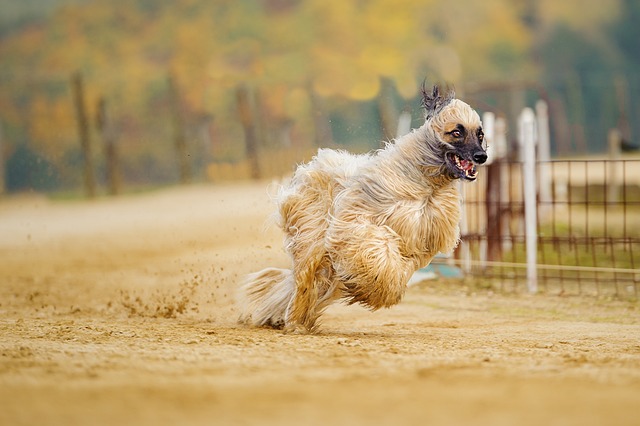
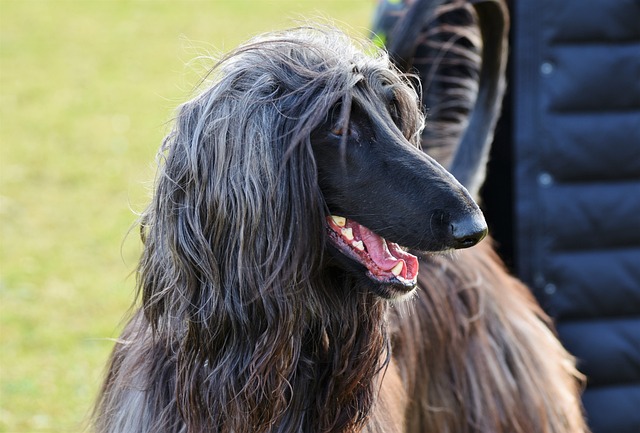
The Hindu Kush Mountain range is a beautiful and awe-inspiring natural feature that runs through Afghanistan and many other countries in Central Asia. The range stretches over 800 km (500 miles) from central Afghanistan to the Pamir Mountains, which form the border between Afghanistan, Pakistan, and Tajikistan.
The Hindu Kush range is one of the most important geological features in Afghanistan and has played a significant role in shaping the country’s history and culture. The rough terrain of the mountains has made it a challenging and often treacherous landscape to navigate, particularly in winter when snow and ice make travel difficult or even impossible at times.
The range contains some of the highest peaks in the world, including Mount Noshaq, which is the highest mountain in Afghanistan and stands at a towering 7 492 meters (24 580 feet) above sea level. It is the 52nd tallest peak in the world.
Other notable peaks in the mountain range are Koh-i-Baba, which stands at 5,982 meters (19,624 feet), and Tirich Mir, which is 7 690 meters (25 230 feet) high and is the highest peak in the Hindu Kush range. Although these mountains aren’t in Afghanistan, I still thought they would be worth mentioning.
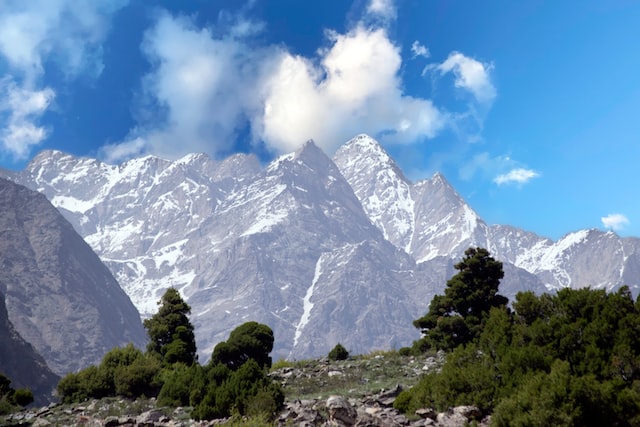
Afghanistan has been known as one of the world’s largest producers of opium for many decades. Opium is a narcotic substance extracted from the poppy plant, and it is used to produce heroin and other opioids. According to the United Nations Office on Drugs and Crime (UNODC), Afghanistan accounted for approximately 84% of the world’s opium production in 2020.
Opium production is a significant source of income for many farmers in Afghanistan, particularly in rural areas where alternative sources of income are limited. Many farmers rely on opium as their primary cash crop, and they often find it difficult to switch to other crops because of the higher profitability of opium. Additionally, opium production requires less water than many other crops, making it more suitable for the arid and harsh conditions found in many parts of Afghanistan.
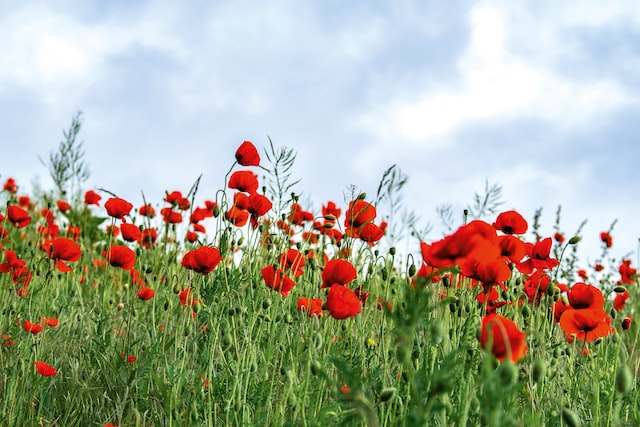
If you enjoyed this article and would like to see more please click below to see a similar article about another interesting country.
Related post: 21 fun facts about Mongolia!